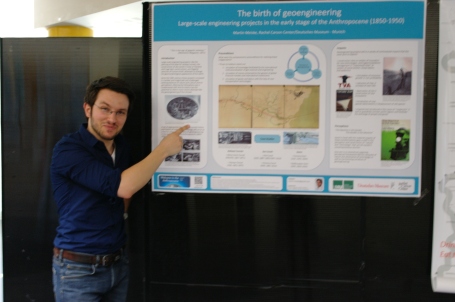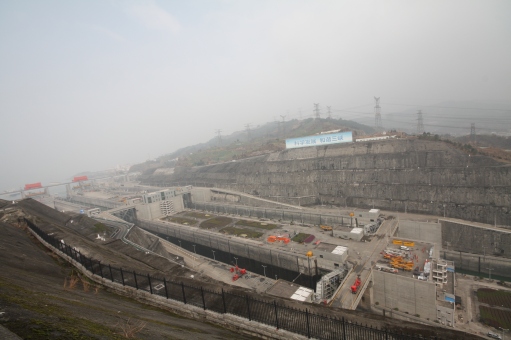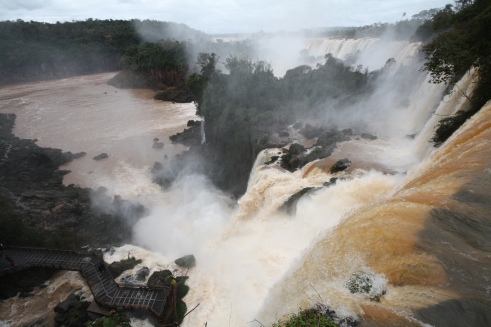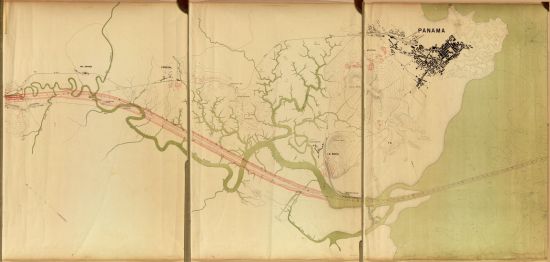Congratulations to RCC doctoral program member Martin Meiske, who received the prize for the best poster at the 2015 ESEH conference in Versailles. In his poster he presented his dissertation project on “The Birth of Geoengineering: Large-scale Engineering Projects in the Early Stage of the Anthropocene (1850–1950)”—here, he tells us more about his inspiration and path to the RCC.

In his book Im Raume Lesen wir die Zeit (In Space We Read the Time), the German historian Karl Schlögel encourages historians, who for a long time were said to be experts of time, towards a closer observation of space: Hinab vom Hochsitz der Lektüre! (Down from the Raised Blind of Reading!), come out of the archives and libraries and start working with your eyes, learn to read topographical structures, mental maps, and places of events. Here at the Rachel Carson Center, through daily interdisciplinary exchange with fieldworkers in geography and social anthropology, I found myself trying to trace back the role of these moments of spatial observation and imagination in the formation of my research interests that finally led to my PhD topic “The Birth of Engineering. Large-Scale Engineering Projects in the Early Stage of the Anthropocene (1850–1950).”
My travels in China and Argentina have been pertinent to my study. After a five-day trip on a rusty steamer on the Yangtze and a bus tour along the river I reached one of the most tremendous and controversial large-scale engineering projects of the last decades: the Three Gorges Dam. Despite the early morning fog, the scale of how far humans are altering the planet became increasingly visible to me. This was my personal “Welcome to the Anthropocene” moment.

Two years later I made a 19-hour bus journey from Buenos Aires to Iguazú, in the north of Argentina. The region of Misiones had just been hit by a flood, and a viewing platform had been dragged into the depths of the waterfalls; the wild waters were colored brown by the sediments they carried with them. When entering the Americas for the first time, traveling through sparsely populated regions, as a European I experienced new dimensions of the powerful and sublime natural world, and ideas of space and time began to shift.

San Telmo, an old quarter in the Argentinian capital, was hit by a heavy yellow fever epidemic in 1871. I lived there during four months of research, finally bringing together my multiple trains of thought. Here, in the former “mosquito empire” as John R. McNeill might have called it, I derived the framework of what later became my PhD project with the aim of exploring and reconstructing the “birth” of geoengineering. From a historical perspective, megascale engineering projects, such as the excavation of the Alps for railway tunnels, the construction of sea canals like that of the Panama Canal, and huge dam constructions, were flagship ventures of humankind’s attempts to change the appearance of earth. Since the 1850s, these projects increased in number and magnitude and challenged existing balances of nature and culture and its perceptions. I understand the history of geoengineering as being wider than the history of climate engineering: the history of the alteration of the upper lithosphere is connected to reflections and narratives of controlling nature, a hope for cheaper energy, and failed investments and deadly catastrophes that laid the foundation for critical debate surrounding climate geoengineering today.
A set of approaches from environmental history and the history of science and technology will serve as a lens to uncover different histories of geoengineering. I intend to apply them through six case studies formed by three transatlantic pairs, parallel in time:
- Railway tunnels, formed by the Mont-Cenis Tunnel (1857–71) at the French-Italian border and its US counterpart, the Hoosac Tunnel (1851–75).
- Sea canals, consisting of the Panama Canal (1881–1914) and the Kiel Canal in north Germany (1887–95/1907–14).
- Fontana Dam (1942–44), built by the Tennessee Valley Authority, and the Roßhaupten Dam (1950–54) in Bavaria.

Three fields of research trigger my interest the most: firstly, What were the socioeconomic preconditions for realizing these megaprojects? The circulation of knowledge facilitated by the international institutionalization of geosciences and engineering, the circulation of money enhanced by the genesis of global financial markets and international investments, and the circulation of goods and labor with the help of new transportation technologies stand out at for me.
Another question relates to impacts: How far were construction sites centers of innovation for new technologies, and hygiene/epidemic management? One could also tell the stories of “improvised cities” for the workers as centers of social tension, cheap labor, and epidemics. Furthermore, in which cases did they stimulate economic growth, and where have they turned out to be non-profitable? The removal of risks was often followed by new ones—old ecosystems were destroyed, and at the same time new ecosystems were constructed.
Sea canals also play an important role in the introduction of new species (bioinvasion) and the displacement of old ones, as “Lessepsian Migration” shows in the case of the Suez Canal. Geoengineering projects have served as an imperial tool, introduced in the name of “modernity” and to connect world regions and facilitate the exchange of people and goods. Lastly, then I think that, hand-in-hand with these material impacts, a shift in the perception and construction of “nature” and “technology” occurs. One aim of mine is to reconstruct opposing perceptual frameworks such as the conquest of nature and adversaries of technology, as well as to harmonize narratives of geoengineering.
I am aware that this is a very global approach, and several challenges—from spreading diversified case studies across interdisciplinary chapters to vital discussions about geoengineering and the Anthropocene—wait for me. But my first months at the RCC and the Deutsches Museum have already been very fruitful for my work, and thanks to engaged doctoral colleagues, supervisors, fellows, and staff I am very much looking forward to the time to come.
Leave a Reply